Doctors Question Value of Vitamin Supplements

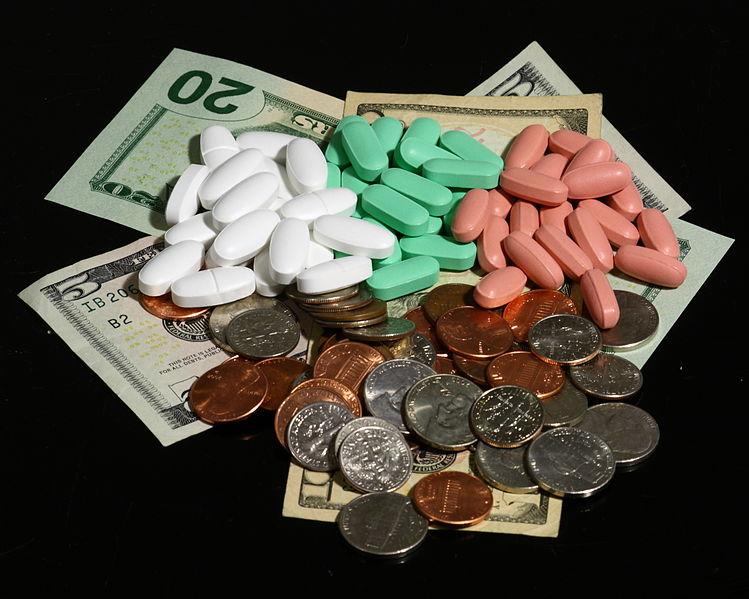
For years, we’ve been told to take our vitamins. Vitamins have only been billed as practical sense, they have been touted as a necessity in an increasingly automated world in which on-the-run meals, canned foods, frozen entrées and instant ingredients are often diet mainstays. And according to some sources, vitamin supplements have not only been important for ensuring good nourishment, but also guard against chronic illness, like heart disease and cancer.
Some doctors disagree with that last statement. In fact, they are charging that the last few decades of multi-vitamin popping may actually have been doing some patients harm.
So multivitamins aren't good for us?
According to an editorial published in the Annals of Internal Medicine, three different studies looked at whether multivitamins actually had an effect on certain health risks. Those risks were a) the likelihood of preventing a cardiovascular event b) cognitive function in men in later life and c) the development of cancer or heart disease in people who didn’t have nutritional deficiencies.
The findings, say the authors, irrefutably say no. Multivitamins don’t help people stave off the chances of developing chronic disease. Nor do they help improve cognitive function in people with age-related dementia at 65 or older. And they don’t prevent the chance of a cardiovascular event in patients who, for example, have already had a heart attack.
Supporting the $30 billion vitamin and mineral supplement industry (2011) therefore, because we are afraid of the possibility of developing a chronic illness, is wasting our money.
Research, peer reviews and opinions
But not everyone is completely convinced. One article printed in the British Daily Telegraph and ironically, republished by the U.S. website PubMed Health, points out that the editorial that the researchers wrote was more publicized than the studies it was based on. The actual studies received relatively little peer critique “which is disappointing as it summarizes findings from multiple studies, and is one of the strongest forms of evidence.” In other words, vigorous debate is as much a part of scientific investigation as the findings that are put forth as evidence.
The newspaper article also calls into question whether the editorial is more about opinion than the actual scientific results: Is this about doctors’ confident findings, or about ongoing, beneficial research?
This point was also raised by one of the comments left on the editorial, who said that the authors had not considered certain hallmark findings published by the AMA in 2012. The 2012 study revealed that all cancer rates excluding prostate dropped 8 percent when a daily multivitamin was administered.
Scientists rarely are willing to state irrefutably that a “case (is) closed” about a given study. There’s a reason: There’s always somebody, or something that contradicts the finding. Find a loophole in the argument, and there goes a researcher’s well-stocked notoriety, and possibly his or her reputation.
Multivitamins and which chronic illnesses?
The authors did make an exception for Vitamin D, which they said may be of help to individuals who are susceptible to falls. However, they made no mention of the benefit of calcium in individuals with bone-related disorders like osteoporosis.
The researchers also made no mention of the fact that there are chronic conditions that due to new technology, have only recently been found to benefit from multivitamins. One example is celiac disease, which prevents the absorption of key nutrients from fresh food. Are there other diseases that may be affected by nutritional deficiencies?
Vitamin supplements: How nourishing is our food?
To be sure, not everyone is in love with our dependence on vitamin supplements. The Office of Dietary Supplements, which is overseen by the National Institutes of Health, points out that research findings are often conflicting and "observational." It mentions several studies, widely varying in their findings to substantiate this. But it also notes that "No U.S. government health agency, private health group, or health professional organization promotes regular use of an MVM (multivitamins and minerals) or individual nutrients without considering first the quality of a person's diet. However, individuals with poor nutrient intakes from diet alone, who consume low-calorie diets, or who avoid certain foods (such as strict vegetarians and vegans) might benefit from taking MVMs."
So can researchers actually say that multivitamins are ineffective? Is a blanket assertion that multivitamins aren’t any good for “chronic illness” (but while actually implying a limited number of diseases - not all chronic illnesses) really educating consumers and helping them to choose their healthcare wisely? Or does it just add one more layer of confusion in an increasingly automated society?
No doubt this will continue to be a highly contested topic, contrary to what the authors implied when they suggested that their research was conclusive. As the Linus Pauling Institute (LPI) points out, ensuring that people can actually buy food that has the recommended daily amount of those nutrients is the first stage in cutting vitamins from daily use.
"To call 'the case … closed'" says LPI, " and label MVM supplements as useless, harmful or wasteful is highly premature and unscientific, and does not serve public health."
Image by Ragesoss
Local Beer Will Save us All


We all knew it, didn't we? That the world's salvation might at least partially be found in that most ancient and beloved of humanity's discoveries: beer and fermentation. Ever since President Carter deregulated the U.S. beer market in 1979, a great and largely unsung accomplishment in this writer's opinion, the U.S. has burst into a beer renaissance. Those small breweries are helping to revitalize communities. They're giving us new places to fraternize with friends and family, and a sense of town pride. And many craft breweries are becoming early adopters of cutting edge, clean technology, putting clean tech into real world use.
For example, Bear Republic Brewing Company in Cloverdale, California, population 8,618, has become the world's first industrial scale adopter of a bioelectrtic wastewater treatment and reuse system created by Cambrian Innovation in Boston. The system, dubbed EcoVolt, is about the size of a cargo shipping container and is kept on the brewery's premises. The containers are modular, so a company can add more units as its water treatment and electricity needs grow. The EcoVolt takes waste water in, processes it using bioelectric microbes (or what I like to call "critters"), and pumps clean water and methane out. I'm sure the good folks at the MIT spinoff company, Cambrian Innovation, have a more detailed explanation of the process. It's only super-science at its best.
Basically, the brewery's waste water goes in one end of the EvoVolt system and comes out the other end as reusable water and methane. The water can be used for brewing. The methane can be used on the premises for either heat or electricity or both. All very useful for a brewery. Or a winery. Or a food processing plant. The system reduces Bear Republic Brewing Company's carbon footprint, sewage and water costs, and produces enough heat and electricity to compensate for over 50 percent of the company's baseload electricity use.
Less waste. Fewer resources. Lower carbon footprint. And an estimated 25 percent return on investment for the company annually. Annually!
Meanwhile in Michigan, home to Grand Rapids, recently voted Beer City (my stomping grounds), breweries are finding savings and a sense of purpose in powering their operations with solar and sourcing materials locally. Brewery Vivant is in a LEED silver certified building while working toward a goal of 10 percent on-site power generation, with a goal of 25 percent beer inputs grown within 250 miles of the brewery.
Arbor Brewing Company in Ann Arbor, Michigan and its sister company Corner Brewery in Ypsilanti, Michigan became Michigan's first solar breweries in 2012 when they installed over $350,000 in solar photovoltaic, solar-thermal, and geothermal technologies and energy efficiency measures.
The local pubs making local beer seem a strange launching ground at first for a more sustainable, cleaner world. But these craft breweries really are about bringing things closer to home. About being more bonded to and mindful of our communities. The water they use is our water, and more importantly, our beer. Preserving that resource is important to the community and to the business model. Clean, locally produced energy, and locally sourced grains and hops, brings that experience even closer to home.
In my home town, where the industrial economy collapsed and the down-town along with it, we've got two new breweries that are becoming a source of town pride. And an important driver of foot traffic in the down town area. Good, locally produced beer is about people. It's about planet. And yes...it's about profit.
Boeing Seeks FAA Approval for Biodiesel


Boeing is working with the U.S. Federal Aviation Administration (FAA) and other stakeholders to obtain approval for its planes to fly on green diesel. The company named green diesel as a “significant” new source of aviation biofuel, one with at least 50 percent less carbon dioxide emissions than fossil fuel during its lifecycle. Boeing’s researchers have found that green diesel (made from oils and fats) is chemically similar to current aviation biofuel. If green diesel is approved it could be blended with traditional aviation fuel. Green diesel can be used in any diesel engine and is chemically different than biodiesel. Green diesel production in the U.S., Europe, and Singapore could supply up to one percent, about 600 million gallons, of jet fuel demand. The wholesale cost is about $3 a gallon with U.S. government incentives.
"Boeing wants to establish new pathways for sustainable jet fuel, and this green diesel initiative is a groundbreaking step in that long journey," said Julie Felgar, managing director of Boeing Commercial Airplanes Environmental Strategy and Integration, in a statement. "To support our customers, industry and communities, Boeing will continue to look for opportunities to reduce aviation's environmental footprint."
"Green diesel approval would be a major breakthrough in the availability of competitively priced, sustainable aviation fuel," said Dr. James Kinder, a Technical Fellow in Boeing Commercial Airplanes Propulsion Systems Division. "We are collaborating with our industry partners and the aviation community to move this innovative solution forward and reduce the industry's reliance on fossil fuel."
Boeing is part of the Sustainable Aviation Fuel Users Group (SAFUG), whose goal is to develop sustainable jet fuel. Formed in 2008, SAFUG members are committed to accelerating the development and commercialization of sustainable aviation biofuel. United Airlines and Lufthansa are SAFUG members and both airlines have committed to using biofuels. In 2011, Lufthansa tested biofuels in regular flight operation, and became the first airline to do so. The airline used a 50/50 mix of regular fuel and biosynthetic kerosene made from jatropha, camelina and animal fats produced by Finnish company, Neste Oil. Last summer, United signed an agreement with Seattle based AltAir Fuels to purchase 15 million gallons of biofuel. The biofuel is produced using camelina as feedstock. United will buy the biofuel over a three-year period beginning in 2014.
The cost of fossil fuels is driving the aviation industry to explore alternative fuels. A 2008 study cited the “high cost of petroleum combined with aviation’s total dependence on petroleum-based fuel” as the largest driver for developing and adopting alternative aviation fuels. The other drivers include environmental impacts and the possibility of disruptions of petroleum supplies. By reducing dependency on fossil fuels, alternative aviation fuels can lessen the industry’s environmental impact, including reducing greenhouse gas emissions.
Photo: Sheldrake1
Are Corporate Volunteer Days Worth It?
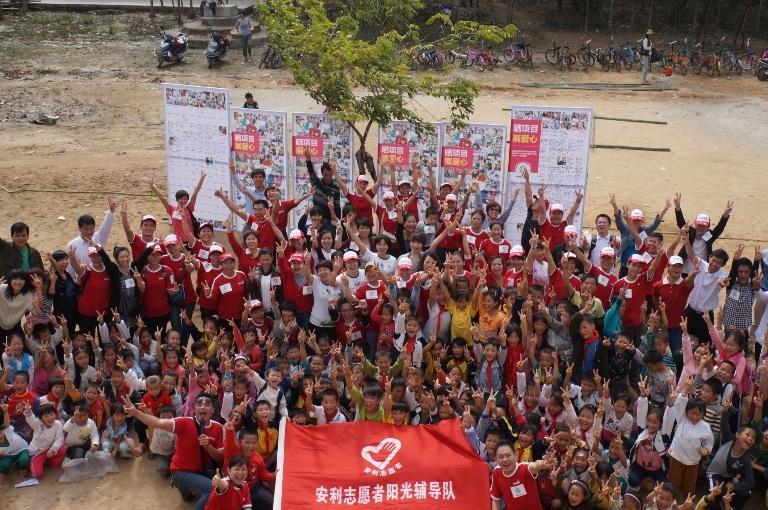

Jesse Hertstein of Amway asks: How do the benefits of day-long volunteering stack up against long-term investments?
I serve on the board of a Literacy Center that aims to elevate reading and writing levels across the community. One of our most powerful programs uses one-on-one volunteers to teach adults to read for the first time in their lives. It’s powerful stuff. But it can take many months to bring them to basic, functional levels.
The greatest impact you can have on a person’s life is usually made through steady, long-term commitments, like tutoring, mentoring, facilitating home ownership or providing nutrition. Change doesn’t usually happen in one day, but over a long period of time.
Global volunteer days: why bother?
So why do we place so much emphasis on single volunteer days that draw crowds of people?
As our Amway One by One Campaign for Children reached its 10-year anniversary, we asked ourselves whether we should have a single, global volunteer day. The idea had surfaced in the past, and each time we rejected it.
Why? Big change was happening at the grassroots level and each of our country offices was developing meaningful partnerships. We were helping children with disabilities in the U.S., providing nutrition in rural schools in China, building homes for families in Latin America, immunizing children in Africa through a pan-European alliance. These were thoughtful, long-term commitments that showed lasting change.
At first, we were afraid that a global volunteer day would devalue the investments we had made in local communities and turn volunteer efforts into a spectacle. But what made us turn the corner was the data.
Reframing the idea: a global demonstration
The data made us reframe the idea. While we had reached big milestones of helping 10 million children, and could count nearly 2.7 million volunteer hours and $190 million in contributions, we still had relatively low awareness and mediocre engagement in the programs.
Amway is made up of 21,000 employees and 3 million Amway Business Owners. If we could get more of them engaged, there would be no end to our positive impact on the world, working from the ground up through our international networks like no other organization can do.
A global volunteer day wasn’t just about the impact we would have on that day. It was a way to show the world that Amway is serious about mobilizing people to help children in our communities. Even more so, it was a way to show ourselves what we were capable of when we channeled our generosity on a global scale.
Our global volunteer day
We used the same approach we had been using for ten years. Create a simple call-to-action but allow our regional offices to develop their own plans. As a call to action, we leveraged all of the voices we could: our product brand celebrity spokespeople, our CEOs, top Amway Business Owners and NGO partners.
On the actual global volunteer day, we took over an empty warehouse at our U.S. headquarters and offered every single employee – office, manufacturing, logistics, executive – the chance to participate in a volunteer project, from building bikes to creating care packages to assembling disaster relief kits.
Around the world, projects were as diverse as our markets. In Thailand, Amway Business Owners delivered 22,000 winter jackets to kids in remote schools. In Mexico, we built Habitat for Humanity homes. In Korea, we volunteered for foster children at child welfare centers. Across Europe, we assembled and delivered care packages.
We encouraged people to upload Instagram photos using hashtag #amwayonebyone, and we saw more than 1,000 “volunteer selfies” from around the globe. More than 15,000 volunteers participated in 57 countries, helping more than 100,000 children. It was astounding to see how people responded, even to our global CSR team that had seen story after story for the last ten years.
Is a global volunteer day worth it?
The survey data will not be in for another six months, so the jury is still out on whether we moved the needle on awareness and engagement. But I am sure that we planted a seed in the hearts of many people around the world. I know that for many, this was their first volunteer experience and they will be looking for their next.
For organizations with a global footprint, or those spread out over a national geography, the question will likely come up. As a former skeptic, I am convinced that there is value in organizing such an event. But the value is mostly internal: It is a chance to engage those who may not otherwise sign up on their own. It is an opportunity for people to try volunteering for the first time in a safe, lively environment. It is a way to emphasize the importance of community involvement in your organization’s culture.
Be clear about your objectives, because it is a lot of work! But a demonstration of your commitment might just be the boost your program needs.
http://www.youtube.com/watch?v=592YP60juNU
Jesse Hertstein is Amway Senior Corporate Citizenship Specialist, and author of the Amway One by One Campaign for Children blog, which provides thought leadership around grassroots cause activation and captures stories of successful partnerships around the world. He has traveled extensively documenting Amway CSR programs, and serves as a leader in his own community around issues of literacy.
Image credits: Amway Corporation
Give & Gain campaign extends international reach


Volunteering initiative Give & Gain Day is extending its international reach with four new partnerships in Honduras, Panama, India and Kenya.
Now in its sixth year, the annual Business in the Community (BITC) campaign will see its 100,000th person take part and volunteer in their community on 16 May 2014. The initiative kicked off officially at the BT Tower last week.
Sponsored by Lloyds Banking Group, Society and Waitrose and in association with BT and ITV, Give & Gain Day 2014 is dedicated to getting thousands of employees out of the office, store or factory to volunteer in their local communities.
Last year, almost 300 companies sent out over 12,000 volunteers on Give & Gain Day – helping 600 community organizations in the UK. In total, the value of time donated by volunteers across the UK on Give & Gain Day was £1.3m. Business volunteers helped in schools, day centres and youth groups, doing everything from delivering employability workshops and CV training for the long term unemployed to supporting school sports days.
At the launch Stephen Howard, chief executive of BITC emphasized that the day this year was about celebrating what volunteering can achieve: “In the last year Business in the Community programmes were powered by 46,000 volunteers who gave half a million hours of their time. Give & Gain Day is an opportunity for businesses, community organisations and schools to celebrate what can be achieved through the power of volunteers. Employee volunteering is a win-win, the experience builds skills and motivates employees, whilst helping meet community needs.”
To get involved click here.
New app helps employees combat bribery


With corruption still topping the list of FTSE350 company concerns, the Institute of Business Ethics has developed a timely app to help employees make the right decision in tricky situations.
The Say No Toolkit is a decision-making tool that can be used either as an App or via a website. It provides employees with immediate practical help in making the right decision across a variety of situations, such as when to accept a gift, when not to offer hospitality, what to say to avoid a facilitation payment and what to do if faced with a conflict of interest.
The IBE says the toolkit will help companies which are looking for ways to reinforce messages to employees about doing the right thing.
IBE’s director, Philippa Foster Back CBE OBE, commented: “Any one, at any level, in any organisation, can be offered a bribe. The SayNo Toolkit supports staff by giving them clear and easily accessible guidance about what can or cannot be accepted. Not only will the App provide an adequate procedure to combat bribery, it could also help to minimise the risks of corruption taking place.”
To access the toolkit, click here. The smartphone/tablet app will be available to download from the end of this month. Both are free of charge.
Picture credit: © Jyothi | Dreamstime Stock Photos
Abu Dhabi's Sustainability Week Kicks Off with Panel on Development in Africa
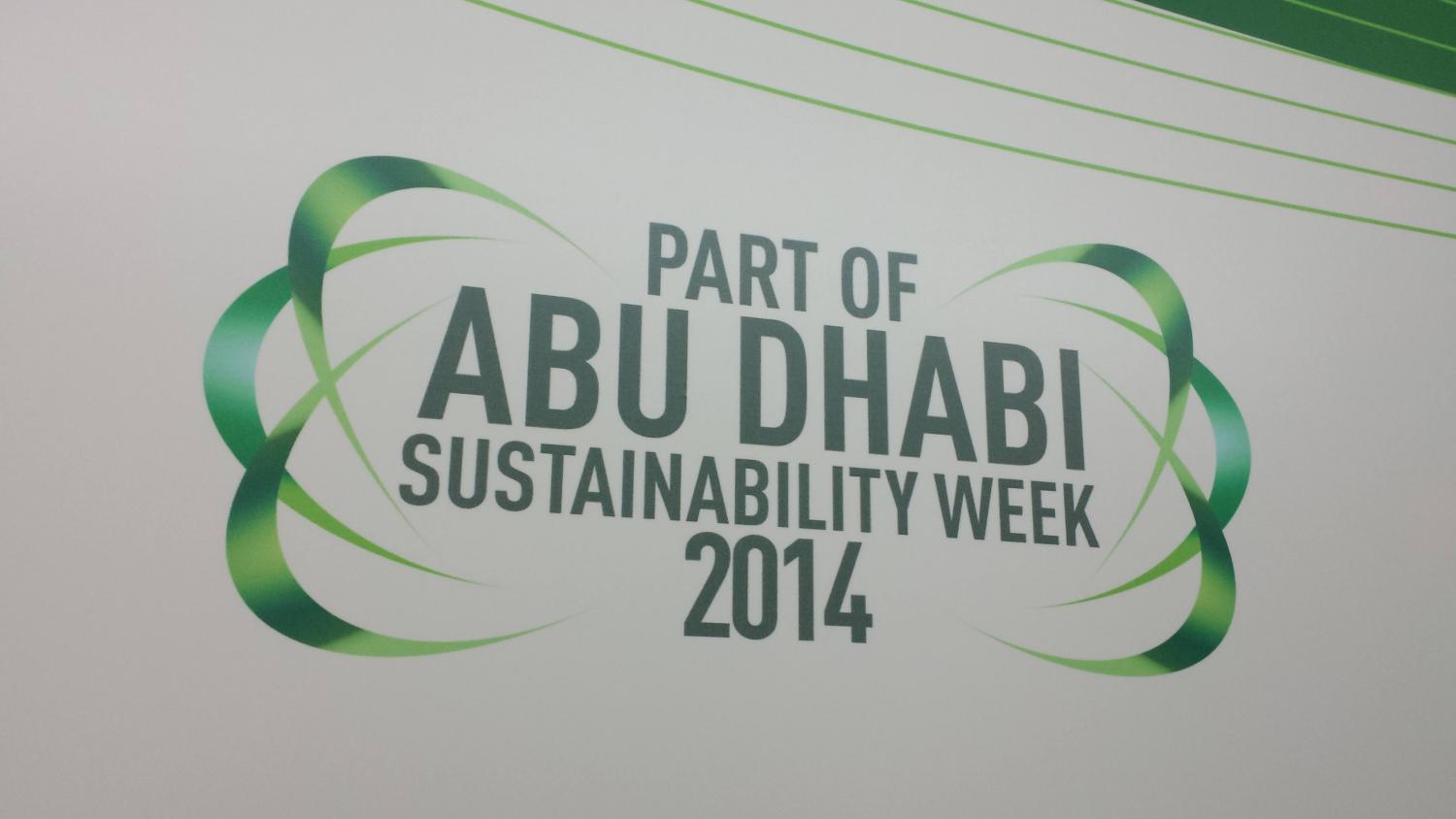

Abu Dhabi Sustainability Week (ADSW), one of the largest sustainability gatherings in the world, launched today with a panel on the future of renewable energy development in Africa. Moderated by Adnan Z. Amin, director-general of the International Renewable Energy Agency (IRENA), and featuring comments from the presidents of Senegal, Sierra Leone and Ethiopia, the panel addressed the opportunities for economic growth in Africa and what the continent needs to grow sustainably.
"Ahead of us lies a future with a tremendous potential for sustainable growth," Dr. Sultan Ahmed Al Jaber, Minister of State in the United Arab Emirates and CEO of Masdar, Abu Dhabi's renewable energy company, said in front of a crowd of dignitaries, world leaders and media this morning. "Nowhere is this opportunity more evident or immediate than in Africa."
"Africa is undergoing unprecedented and sustained growth," Amin of IRENA added. "It has been one of the fastest growing regions of the past decade, with a GDP expected to grow in the coming years on an average from 5 to 6 percent annually."
Africa is drawing more and more attention as the continent of the future. A March issue of The Economist featured the headline "Africa Rising," pinpointing the continent's economic boom as one to watch in the next decade. With rapid urbanization and economic growth on the continent, the need to meet rising energy demand sustainably is a hot-button issue on the world's mind.
"Indeed, Africa is at a crossroads. It wouldn't be an exaggeration to say that Africa is the continent of the future," President Macky Sall of Senegal said at the ADSW opening ceremony in Abu Dhabi. Sall referred not only to economic potential, but also to vast opportunities for renewable energy - pointing to his own country's potential for hydro and solar power and calling on governments and private companies to view Africa as an important partner in global sustainable development moving forward.
While daily headlines in the U.S. often speak of government corruption and human rights violations in Africa, panelists advised world leaders and corporate investors not to view the entire continent through the lens of a few countries still struggling to find their way.
"Africa is now prepared to move forward," said President Ernest Bai Koroma of Sierra Leone, whose own resource-rich country has overcome violent armed conflicts and is now on the path to economic prosperity. "Africa should not be defined by what has happened in the past. The issues that are…sadly happening in South Sudan should not be used to define what is Africa."
To date, almost half of African countries have undertaken national resource assessments for one or more renewable energy sources, according to IRENA. Solar and wind assessments exist for at least 21 countries, biomass assessments in at least 14 countries, and geothermal assessments are ongoing in seven countries. The agency also released a map that details renewable energy potential on the continent, ranging from bioenergy and geothermal to solar and wind.
In addition to recognizing this vast potential for growth in the renewable energy sector, panelists noted that the continent can't accomplish its goals alone. When asked what his country needs from the global community to move the needle forward when it comes to renewable energy production, Koroma said: "The potential for energy is great…but to get there we need interest."
To accomplish this, IRENA announced a new initiative to develop an Africa Clean Energy Corridor at its third assembly last week. Working with partners, IRENA will encourage accelerated expansion of renewable energy options on the power grids of Eastern and Southern Africa. The agency will help countries conduct assessments of wind, solar and other renewable energy resources, and to model the economic benefits of incorporating more renewable generating capacity into their expansion plans for power generation.
After identifying a set of goals for the region over the next five, 10 and 20 years, IRENA will help connect partner countries to public and private investors around the world - ensuring sufficient interest and investment that will allow Africa to meet its ever-increasing energy demands without excessive impact on the planet.
The panel on Africa marks the first event in a week-long sustainability gathering in Abu Dhabi, which includes the World Future Energy Summit, International Water Summit and the inaugural EcoWASTE summit.
Follow along this week for breaking news from the event.
Image credit: Mary Mazzoni
Travel expenses to Abu Dhabi were provided by Masdar, the main organizer of ADSW.
Sharing Economy Revolution Turns Violent in Paris: What Can We Learn?


Parisian cabbies have unleashed hell on Uber cars over the last week, smashing windows and slashing tires. They see Uber as unfair competition...
One of the reasons we love the sharing economy is its ability to turn an entrenched industry on its head for the greater good. Generally the entry of a sharing economy concept into an industry means more efficient, cheaper access to a service and often new economic opportunity for enterprising individuals. It also often results in less consumption of energy or material as people "rent" goods like tools or even cars rather than owning them.
However, turning an industry on its head is not always a graceful maneuver.
Lets take taxis. Taxis are a notoriously entrenched industry in most cities. Heavily connected and governed by deeply bureaucratic rules and complicated commissions, their numbers, fares and availability are highly regulated. As a result, in many cities, getting a cab can be both expensive and difficult - and in the case of San Francisco, futile. New companies like Uber, Lyft and Sidecar have created a secondary market for rides, powered by fast, reliable mobile technology and generally driven by independent people who simply happen to own a car and are looking to make a few bucks on the side. The result has been a huge increase in available rides at competitive prices - and a lot of upset bureaucrats and cabbies.
So are taxi drivers justified in being angry?
On the one hand, losing one's monopoly is bound to be painful - especially in the case of a city like New York, where taxis are governed by a "medallion" system that sells the right to operate a cab for close to a million dollars each. That money and more is paid to local governments who grant cabbies the privilege to offer rides to people. As a result, the pinch that new sharing economy startups put on cabs is also felt by local governments right in the wallet, adding a second level of complexity to the issue.
However, it's hard to have much sympathy for the mafia-style tactics that some cab drivers and companies have employed to slow down change. Smashing Uber cars in Paris is only the latest example. Cab lobbies have used their influence in local government to force cease and desist letters upon startup companies and created bizarre rules like a mandated 15 minute waiting period for ride share companies in Paris before picking up a ride (they want to add even more time). Cab lobbies are the reason the Las Vegas monorail stops short of the airport, creating an immeasurable waste of fuel and time as people wait up to 45 minutes for cabs at the terminal. They allegedly did the same thing to the Green Line at LAX.
Hence the open door to competition
These aggressive tactics, combined with high prices and poor service are what have left the industry vulnerable to competition from disruptive technology, and from the looks of the market, traditional cabs are dinosaurs. There's simply no objective line of reasoning that suggests traditional taxi systems have any advantages over new startups. So what's a taxi owner, who holds a million dollar medallion to do? That's a question that will need to be solved by taxi companies and the local governments they're in bed with. My idea would be to ramp up their professionalism and offer the standardization of service that some people crave (not everyone is comfortable with random people picking them up).
The hotel industry has compensated for Airbnb by offering things no homeowner can provide - luxury, room service, awards points etc... Car rental companies have compensated for car-sharing services by buying them and embracing hourly rentals. I'm certain that somewhere down the line there's an opportunity for traditional taxis to join the party, but kicking and screaming certainly isn't going to help them get there.
Anyone got ideas?
Bloomberg, Paulson Form Group to Assess Climate Risk to Economy
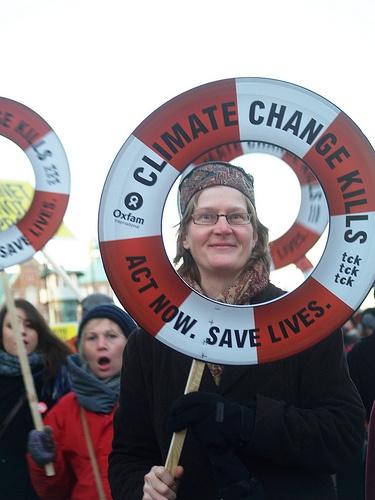

This is another story about a group of business leaders who have gotten together to try to do something about climate change, since our government can't move on the issue due to the numerous cash-filled fossil fuel industry hands stuffing their pockets that are holding them back.
Before you roll your eyes and click on, check out who is on the committee. The group, called the Risky Business initiative is co-chaired by its three founders: former New York City mayor Michael Bloomberg, former Treasury Secretary Hank Paulson, and environmentalist billionaire Tom Steyer.
Also on the Risk Committee are various former CEOs, senators, and cabinet secretaries, including Robert Rubin, Olympia Snowe, Henry Cisneros, and George Schultz. The group will provide and review assessments, deliver messaging and share the results with those regions industries and markets facing the greatest risk from the crisis.
Each of the three founders will bring along their respective foundations: Bloomberg Philanthropies, the Office of Hank Paulson, and Next Generation, as well as the Skoll Global Threats Fund, to provide staff and support for the project.
"How much economic risk does the United States face from the impacts of climate change?" asks the group's website. "Risky Business will help us find out."
The year-long initiative will do its assessment, deliver the pertinent messages and then move on.
Says Tom Steyer, retired founder of Farallon Capital, “If the business of the United States is business, we need to frame climate change in economic language; we need to set the business context.” And that's exactly what the initiative has set out to do through a two-pronged effort of assessment and engagement.
The independent assessment work will combine existing data on the expected impacts of climate with original research on the projected financial costs. This information then will be used to drive informed decision-making on the part of business leaders from those sectors most likely to be impacted.
Kate Gordon, executive director of Risky Business and Vice President of the Energy and Climate program at Next Generation feels that the real strength of the initiative lies in its regional approach.
"Energy and climate are inherently regional issues, and most regions of the U.S. lack a good quantitative analysis of the risks they face from catastrophic climate change,” she said. “Our Risk Committee members bring an enormously valuable perspective to this challenge –they’re familiar with the proper role of risk assessment in decision making from their own illustrious careers, and they represent a diversity of American industries and geographies."
One of those committee members, former Maine Senator Olympia Snowe, sums the group's work up thusly, "The risks of climate change are incredibly uneven across the American economy. We need to make sure that the best science from our National Climate Assessment is presented in a way that brings practical intelligence about the risks to the business community – and that’s what Risky Business is setting out to do. I’m confident that, when presented with a just-the-facts analysis of the economic risks we face, America’R business leaders are more than up to the task, and will know what to do."
There are those who feel that the best way to tackle this enormous issue is for citizens and government to do an end-run around the business community. But, romantic notions aside, I believe our best hope lies in focusing our enormously powerful economic engine in a manner that is both productive and constructive to the task of meeting our material and energy needs within the boundaries that our natural systems have provided.
[Image credit: Oxfam GB: Flickr Creative Commons]
RP Siegel, PE, is an inventor, consultant and author. He writes for numerous publications including Justmeans, ThomasNet, Huffington Post, and Energy Viewpoints. He co-wrote the eco-thriller Vapor Trails, the first in a series covering the human side of various sustainability issues including energy, food, and water in an exciting and entertaining romp that is currently being adapted for the big screen. Now available on Kindle. Follow RP Siegel on Twitter.
Nuclear Energy’s Role in Sustainable Development
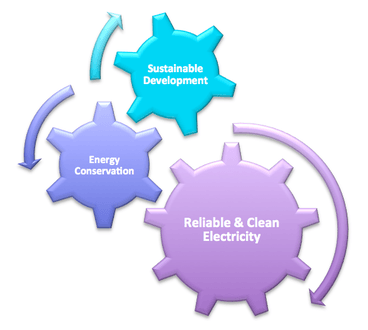

As a lead-up to Abu Dhabi Sustainability Week, Jan. 18-25, Masdar sponsored a blogging contest called “Engage: Cities and Sustainable Development.” The following post was a runner-up.
By Lenka Kollar
Access to electricity generated by clean energy sources is one of the most pressing issues concerning sustainable development for the future. How can the increasing energy demand due to developing nations and growing world population be addressed sustainably?
Nuclear energy can play a valuable role in meeting energy demand with carbon-free base load electricity. Cities can especially play a unique role in deploying nuclear energy because large metropolitan areas need an electricity supply that is ample and dependable. In addition, the World Bank estimates that half of the population today lives in urban areas and that that number will increase to 67 percent by 2050. Deploying both energy conservation and clean electricity generation will allow for sustainable development in urban areas.
Energy conservation must become a focal point of a city’s sustainable development plan because conservation can help offset the growing energy needs of an increasing population. Access to electricity is directly correlated with quality of life. Citizens should never be denied electricity because of shortage or the need for sustainability. Instead, various steps can be taken by urban areas to use electricity more efficiently. For example, buildings and communities can be designed in such a way that they reduce energy usage, have a smaller environmental footprint and use water more efficiently.
The Leadership in Energy & Environmental Design (LEED) program in the United States provides a design and construction rating system for green buildings. In 2011, the U.S. Department of Energy found that LEED-certified buildings had 25 percent lower energy usage than the national average and also reduced operational costs by 19 percent. These buildings are not only green but also save consumers money, which mitigates any extra up-front construction costs. I can attest to this concept because I lived in one of the first LEED-Gold certified residential buildings in Chicago, and my utility and electricity costs were a small fraction of what they were in a slightly older apartment building. The LEED concept can be used as a model for the rest of the world and cities should require all new construction to be green and sustainable.
Even with energy conservation, electricity demand will only grow in cities as more people move to urban areas and the population increases overall. To meet this demand without fossil fuels, more nuclear energy must be deployed as a base load electricity source. Nuclear energy is safe, clean and reliable. Nuclear energy already provides 11 percent of the world’s electricity and with negligible greenhouse gas emissions.
A single uranium fuel pellet, about the size of a coin, contains as much energy as 480 cubic meters of natural gas, 807 kilograms of coal or 149 gallons of oil. A very large metropolitan area, like Chicago, consumes about 85 billion kilowatt hours of electricity per year. A mere 10 nuclear reactors, at 1000 megawatts each, could power an entire large urban area. This huge power density compared to other forms of energy is what makes nuclear energy so important for sustainable development.
Providing enough reliable and clean electricity is a defining issue for sustainable development now and in the future. Population centers and large metropolitan areas need to take action to develop sustainably and become smart cities to ensure quality of life in the future. Energy conservation and nuclear energy for base load electricity are vital to sustainable growth plans for cities across the world.
Image credit: Nuclear Undone
Lenka Kollar (@lenkakollar) is the owner and editor of Nuclear Undone. She is a nuclear engineer educated at Purdue University in the United States. Formerly a researcher at Argonne National Laboratory and the National Nuclear Security Administration, Lenka now spends her career educating people about nuclear issues.